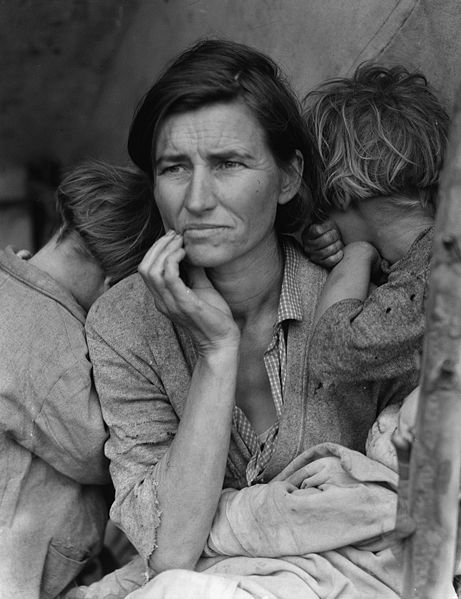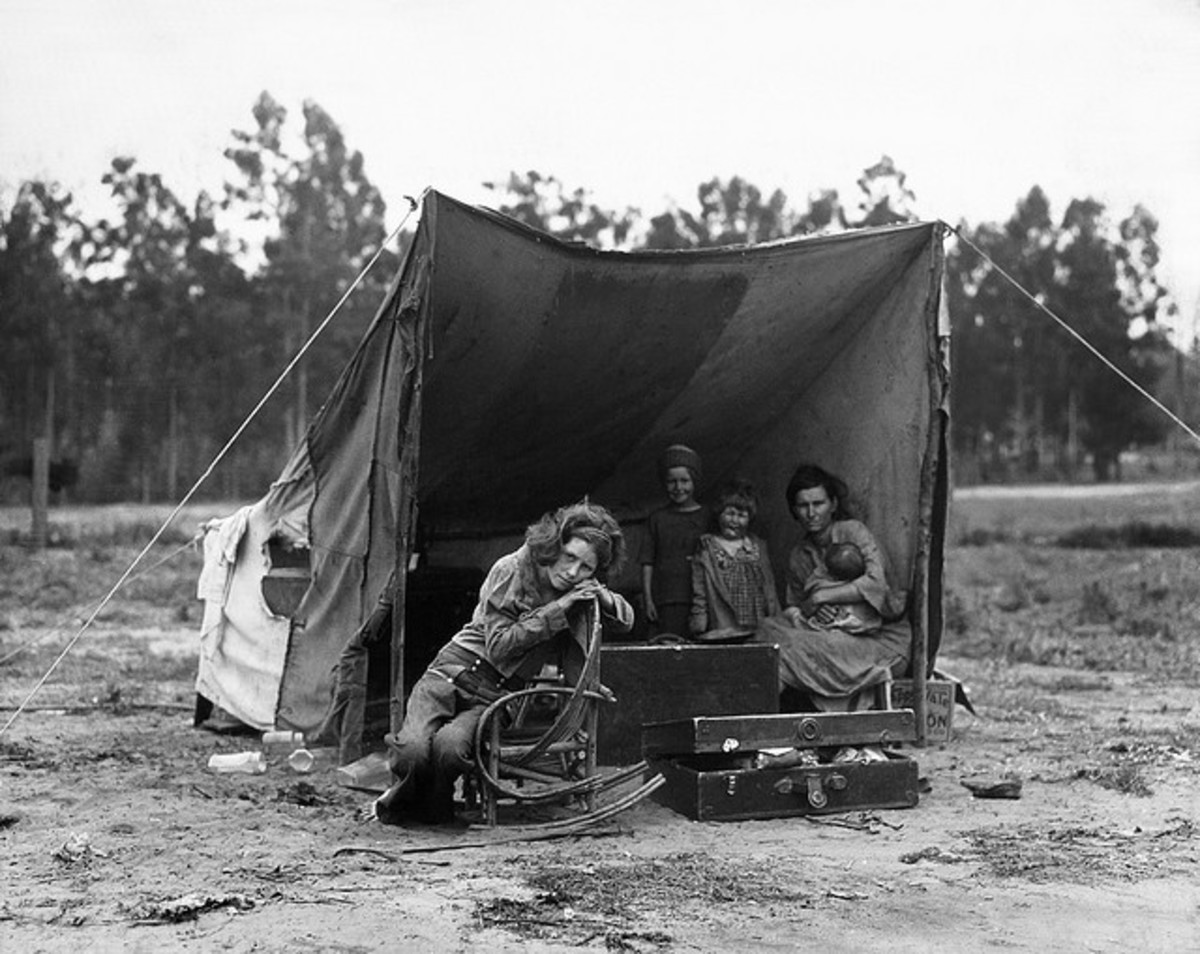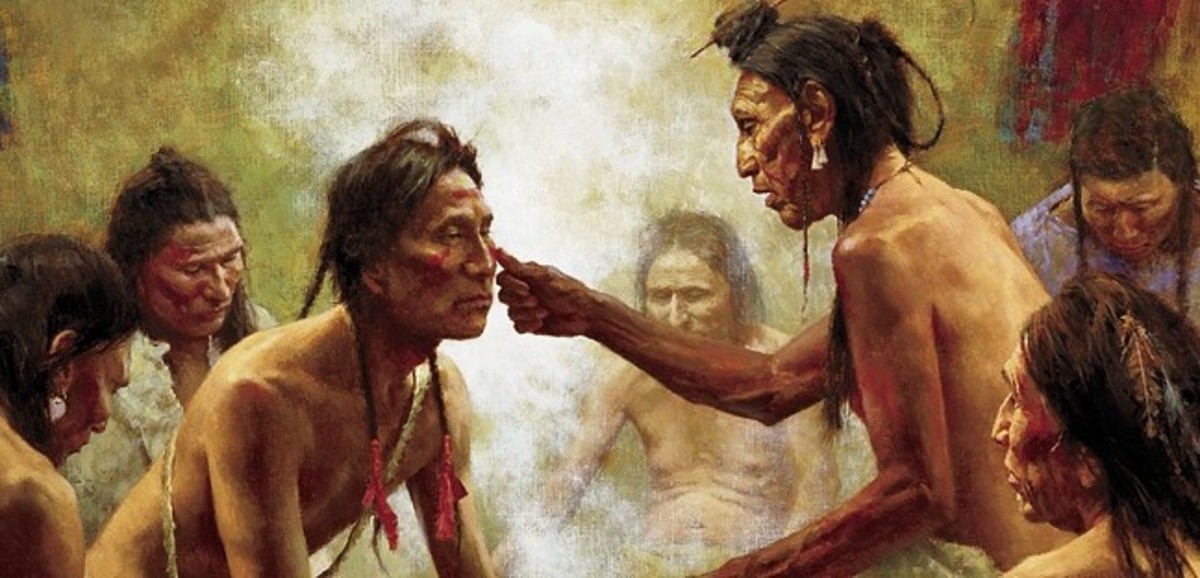Tobacco Road - Poverty and Humor

Tobacco Road
Erskine Caldwell
First Published in 1932 and by
Signet Book & The New American Library. A Modern Classic.
This is a realistic story of the backwater towns of the American South during the Great Depression in which many people starved to death.
The name "Tobacco Road" refers to the dirt road in Georgia along which tobacco farmers hauled their harvested tobacco crops to the market for sale. The crops were originally hauled in animal powered wagons during the Plantation Era in the American South. Sometimes, when there were no draft animals left, African slaves themselves pulled the wagons. Regardless, the author Erskine Caldwell repeated refers to the characters in his book crossing back and forth across the tobacco road - a dirt road. Wikipedia emphasizes that "tobacco road" is 1) the tobacco-producing part of North Carolina and 2) North Carolina sports, with a passing reference to the Caldwell novel; but all this came about only after the Tobacco Road was written and specially referred to the dirt roads along which tobacco was hauled. The point has been missed that tobacco road is just a plain dirt road from the days of Southern slavery!
Tobacco Road, along with Dog Patch, became a nickname for poor areas of towns in the south and even in the north as late as the 1960s. These terms referred to poor whites sitting on front porches in rags, having cars or old pickup trucks up on cement blocks in the front yard. Usually, there was a very old hound dog halfway under the porch and an ancient grandmother or grandfather asleep in a rocking chair on the porch. The TV show Hee Haw played on this theme and ran form 1969 - 1992, about 23 years. Dog Patch USA was a theme amusement park in Arkansas, based on the comic strip by Al Capp - Lil' Abner - where Dog Patch was the poor Appalachian town. The park closed in the 1990s. All of this had at least one hand dabbling in Tobacco Road.
The song Tobacco Road by John D. Loudermilk has been recorded by many artists, including Eric Burden and the Animals, The Blues Magoos, Lou Rawls, Aretha Franklin, and others.
Erskine Caldwell
Stereotype and Pornography
Erskine Caldwell grew up with his father, a minister that dabbled in sociology and took Erskine to visit the poorest peoples of eastern Georgia during the Depression to see how they lived. Tobacco Road results later as a half-comic representation of these poverty-stricken people. Some of the story line is funny and some of it is disgusting. Erskine wrote the book as social protest, but kept a realism that came out as a comic view of the circumstances. Not meant to stereotype the WHOLE South, the book did that in a way, anyway, many Southerners taking affront and calling it pornographic. Lester family in the story are the poorest people I have ever seen. The grandmother makes a fire in the cook stove three times a day out of dead-wood sticks she gathers up form the vacant fields nearby, just in case some food happens along. Usually there is no food. When there is, the rest of the family beats her away from it, so she goes hungry anyway
The father of the family is no-account - Jeeter, head of a lot of poor people, some of which have severe birth defects. The children run away from home as soon as they are old enough. If they don't get away, the girls are married off very young and this causes many conflicts among the young girls and older men. The family exhibits oddly-used manipulative sexuality, an everyday sort of accepted violence that is seen today among certain low-income populations in our nation's inner cities, selfishness, and coarseness. Survival is their number one priority.
Fire - An End and a Fruitless Beginning
The stage play of Tobacco Road ran in NYC from 1933 - 1941, the longest running show up to that date. However, when it toured the country, it was declared obscene in Chicago, closed down, and reopened after a lawsuit. A film was produced in 1941.
At the end of the book, Jeeter sets fire to the broom sedge weed plants that choke his land, attempting to clear it for cotton-crops. However he had no cotton seed and no money and no credit. On top of this, he sets fire to the brush at night and goes to bed, leaving the fire untended. The Chinese state in proverbs that a single spark can burn an entire prairie and this is just what occurs in the story. The untended fire burns Jeeter's land and his house with him and his wife asleep inside. The entire complex is burned to char. Jeeter's son Dude gets help to dig out the remains of his parents and bury them; but, as dead as the land is, he daydreams about planting cotton seed on it. Thus, the cycle of poverty and hopelessness continues into the future generations.
Turnips as Humor
Interestingly, Lil' Abner as a comic strip was first drawn by Al Capp in 1934, after Tobacco Road was first published in 1932, the stage show hit NYC in 1933, and the show toured the USA - specifically being closed down and reopened in Chicago in 1934. The novel was surely an influence on the comic strip. This is particularly true in that Tobacco Road speaks a lot about turnip crops and the yearly crop in Abner's Dogpatch is also turnips. Aside from being an area staple, the turnip is a source of humor in both genres of literature - novel and graphic arts story.
Another similarity of the two genres is in their characterizations of the supernatural and the divine. In Abner's strip, Old Man Mose lives in a cave as a white-haired hermit that gives predictions. In Tobacco Road, old Ms. Bessie prays for people and gives special blessings. Abner goes a step further, however, and features the supernatural animal called a Shmoo, whose goal it is to become whatever any of the poor people need and want the most, whether it be a steak or a chicken, a plank or a bucket of coal.
Tobacco Road is very funny in some parts, but I think that at times, I was just too horrified to laugh. I'm about to read it again for that experience.








